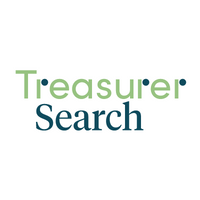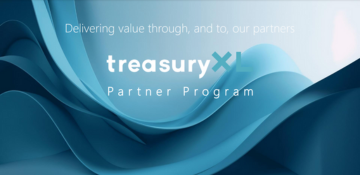It will be remembered as a landmark chapter in the crypto history, with surging institutional interest in crypto assets, technology innovations, regulatory advancements and Bitcoin (BTC) reaching new heights fuelled by the crypto friendly Trump administration.
We just entered the new year 2025. For me it is a tradition to deliver a blog in which I present the main trends for the new year on blockchain and crypto. This blog that will be somewhat longer than normal, dives into the core trends that will further shape the crypto market in 2025 and beyond. thereby increasingly transforming traditional finance.
Existing blockchain services will gain more massive adoption
A first trend we will see is that in 2025 existing blockchain services will gain more massive adoption. Most important are tokenised real world Assets (RWA), DeFi, crypto ETFs as well as the introduction of more stablecoins.
Tokenised RWAs reshaping finance
One of the most significant trends in 2024 reshaping finance is the tokenisation of real-world assets, like property, commodities, real estate and securities, attracting both investors and companies from of a range of industries. This is transforming traditional finance, enhancing liquidity, transparency, and accessibility in the financial markets to various assets classes.
By converting real world assets into digital tokens on a blockchain, tokenisation is unlocking new investment opportunities and making traditionally illiquid assets, such as real estate, more accessible.to a wider range of investors. Tokenization enables fractional ownership, making them tradable even in small fractions, allowing investors to buy and sell portions of assets, thereby unlocking liquidity for traditionally nonliquid assets
The trend of tokenizing real-world assets (RWA) is expected to take off in an accelerated way in 2025 hitting critical mass, revolutionizing how traditional finance interacts with blockchain technology. 2025 will push the boundaries of what can be tokenized. From medical data to personal biometrics, tokenizing assets once deemed untouchable will unlock new markets and create unprecedented opportunities for digital value.
Decentralized Finance (DeFi): reaching all-time highs
Decentralized finance (DeFi) that refers to financial services built on blockchain networks that operate without traditional intermediaries like banks, has exploded over the past few years. They provide decentralized alternatives to banking, lending, and trading. But this is just the beginning.
DeFi is projected to expand significantly in 2025 and beyond, remaining a dominant force in the crypto space. Tokenized securities and high-value assets will thereby catalyse DeFi’s growth, attracting both retail and institutional investors, adding new liquidity and utility. The DeFi sector could benefit from further integration with traditional financial systems, allowing for seamless transactions between fiat and cryptocurrencies.
As the DeFi ecosystem matures, and DeFi platforms such as automated market makers (AMM’s) and decentralised exchanges (DEX’s) become more mature and more user-friendly, it is likely that a growing number of investors will turn to these services for flexible lending and borrowing solutions. This year the DeFi market could reach a $100 billion valuation as more platforms solidify their roles within the ecosystem, more than double compared to 2024..
Increased Market Share of Crypto ETFs
Crypto ETFs have seen significant developments, particularly with the approval of spot Bitcoin and Ethereum ETFs by the SEC in January 2024. This marked a transformative moment for the cryptocurrency market, paving the way for traditional financial players to include these products in their portfolios without the need for navigating crypto exchanges and wallets. This approval already provided a massive inflow of institutional capital, with Bitcoin’s price seeing a notable boost above $100.000, following the announcement of Trump’s presidential victory.
The emergence and growth of Bitcoin and Ethereum ETFs could continue through 2025, significantly accelerating institutional adoption. Bitcoin ETFs would get more inflows than ever before and maybe reach $40–50 billion this year. The popularity of these ETFs might greatly improve the situation of Bitcoin on the market.
Building on the success of Bitcoin and Ethereum ETFs and the more crypto friendly Trump administration, this year could mark a turning point for other cryptocurrency ETFs. There are currently over 10 ETF applications, including Solana (SOL) and XRP, pending review by the SEC for assets signalling the potential for expanded institutional interest in a broader range of digital assets. Such ETFs and other ETPs may continue to increase liquidity and stability in the blockchain and digital asset market.
Stablecoins for Enterprise Adoption
Last year the stablecoin market showed firm growth, triggered by the rising demand for digital assets that offer the stability of traditional fiat currencies. The stablecoin market could double in size by the end of 2025 reaching $ 400 billion, reflecting increased adoption and integration into various traditional financial systems. The stablecoin market’s significant growth in 2024 and projected expansion in 2025 highlight its integral role in the digital transformation of the financial landscape.
This is based on broader acceptance of digital payments, advancements in blockchain technology, and increased regulatory clarity. Stablecoins facilitating seamless transactions and acting as a hedge against the volatility commonly associated with cryptocurrencies. They also provide access to financial services for individuals in regions with limited banking infrastructure, promoting greater economic participation.
More institutional interest in the crypto world
This year is gearing up to be a pivotal year, especially when it comes to institutional blockchain and crypto adoption. In 2024 we already have seen a growing institutional interest in tokenised real-world assets (RWAs) and ETFs, thereby recognising cryptocurrencies as legitimate assets. Major companies have already made Bitcoin and other important cryptocurrencies as part of their balance sheets, while institutional investors are starting to see digital currencies as a viable store of value
Major payment networks, such as Visa and Mastercard, are incorporating blockchain technology into their operations, while major players in the financial world like Fidelity, BlackRock, Goldman Sachs and JP Morgan are entering the RWA space, signalling growing confidence in the potential of blockchain technology to transform traditional asset markets.
The trend of traditional institutions entering the crypto space is expected to continue during 2025 in an accelerated way. Asset managers, hedge funds, and large corporations will likely increase their exposure to crypto assets as part of diversified portfolios. Institutional adoption is expected to reach new heights.T he volume of institutional crypto investments could surpass the $500 billion mark, driven by demand for regulated investment vehicles, including ETFs and structured products.
As institutional investors continue to show interest, we may see further innovations in cryptocurrency-related products, such as bitcoin loans. These types of loans allow institutions and individuals to leverage their crypto holdings without selling them, offering a more efficient way to access liquidity.
II Arrival of new blockchain services
Other interesting trends to expect in 2025 is the growing adoption of Blockchain-as-a-Service (BaaS) and the arrival of new blockchain related services such as Central Bank Digital Currencies (CBDCs).
Growing Adoption of Blockchain-as-a-Service (Baas)
Blockchain-as-a-Service (BaaS) is a cloud based platform with which companies may implement and use blockchain solutions. In 2024, BaaS matured significantly, becoming a key component for businesses looking to leverage blockchain technology without the complexity of developing and the need of managing their own complex infrastructure. By simplifying the acceptance of blockchain BaaS trends in the technology. Accessibility and accessibility will be stimulated.
BaaS will become an important trend in 2025, where big technology companies such as Microsoft and Amazon offer blockchain services (infrastructure and maintenance). With BaaS companies may chose the most suitable blockchain protocol for their needs. Going forward, more companies might adopt BaaS platforms, which could lead to increased application in supply chain management, finance and health care.
Launch of Central Bank Digital Currencies (CBDCs)
Central Bank Digital Currencies (CBDCs) are another significant trend on the horizon. These government-backed digital currencies aim to enhance payment systems, reduce transaction costs and increase financial inclusion. They have become a focal point in the financial world.
2025 is poised to be their breakout year. Central banks worldwide are exploring or piloting CBDCs as a way to digitize their national currencies to enhance monetary control, streamline payments and reduce dependence on cash. This year multiple countries are expected to have launched fully operational CBDCs. They could be available in over 20 countries, including China, India and the EU each utilizing blockchain technology to facilitate secure, efficient transactions. I however just heard that Trump will put an end to all CBDC activities by the Fed in the US.
CBDCs are expected to coexist alongside existing decentralised cryptocurrencies, though they will operate within more centralised frameworks, providing a stable digital currency for everyday transactions. The coexistence of CBDCs and decentralized cryptocurrencies will present unique dynamics. While CBDCs offer stability and government backing, decentralized cryptocurrencies provide greater privacy, autonomy, and resistance to censorship. Balancing these features will likely define the financial landscape of 2025 and further.
III Technology innovations: Solving blockchain challenges
During 2025 we will also see accelerated technology activities to solve the various blockchain challenges that restrict blockchain adoption including interoperability, scalability, security, privacy and sustainability. solutions .These challenges are increasingly being addressed for the blockchain technology to reach its full potential
Layer 2 solutions are revolutionizing DeFi
This year we will see is the accelerated emergence of Layer 2 solutions. These solutions address the scaling and interoperability issues of blockchain networks, enhancing scalability and facilitate integration between blockchains, which hold immense potential to transform the crypto ecosystem.
- Solving the interoperability challenge
A persistent obstacle has been the siloed nature of blockchains. Interoperability solutions may break through these barriers by building bridges between different blockchain eco-systems, enabling seamless interactions across different networks. Several platforms and developers are working on solving this challenge by building interoperable solutions to connect multiple blockchains. This reduces the complexity for users who wish to interact with multiple cryptocurrencies and decentralized applications (dApps).
This process will be accelerated in 2025. Projects like Polkadot and Cosmos use Relais chains and hubs to let communicate blockchains with each other, bridging previously isolated ecosystems. This approach makes it easier for developers to create secure, interoperable smart contracts that operate seamlessly across multiple chains. We will also see increased use of the Inter-Blockchain Communication (IBC) protocol to enable decentralized applications to interact across chains with minimal friction, improving both usability and composability.
- Solving the scalability challenge
As blockchain continues to be onboarded and integrated within corporations across various sectors network multiple Layer-2 scaling applications have more recently come to market, enabling lower latency and higher transaction throughput. This lets data and assets move easily between different blockchains.
By 2025, advancements in layer 2 scaling solutions, such as Ethereum’s rollups and Bitcoin’s Lightning Network, are expected to significantly enhance transaction speeds and reduce costs. With Layer 2 integration, transaction fees are expected to decrease, making the network more accessible for users, attracting more DeFi and NFT projects. L2 solutions may also introduce smart contract functionality, facilitating the adoption of decentralized applications, making DeFi accessible to a wider audience. This is driving a new wave of DeFi growth paving the way for a robust DeFi ecosystem built around cryptocurrencies.
Improved Security and Privacy Features
As cryptocurrency becomes more mainstream, security and privacy concerns will continue to be a focal point. More severe data privacy regulation worldwide would lead to stronger integration of privacy improving technologies making blockchain a trustful and more conform solution in various segments including finance, healthcare and identity verification.
In 2025 we may expect to see increased innovation in security protocols, such as more robust encryption methods, decentralized identity solutions, and multi-signature authentication. Advancements in quantum computing, artificial intelligence, and zero-knowledge proofs (ZKPs) will introduce new layers of security, privacy and functionality to blockchain systems. Privacy protocols will play a crucial role in the crypto ecosystem by providing secure, non-custodial trading options. Privacy related technologies are likely to become more widely used, enabling users to transact with greater privacy, which is an important consideration for both individual and institutional users.
Green Crypto Projects and Regenerative Finance (ReFi)
Environmental sustainability has become a critical concern in the crypto industry. The environmental impact of cryptocurrencies, especially Bitcoin’s Proof of Work (PoW) mining, has led to growing interest in green crypto solutions. As governments and environmental groups push for more sustainable practices, the cryptocurrency space is exploring eco-friendly solutions. Ethereum’s transition to Proof of Stake (PoS) has set a trend for sustainable crypto practices, and other networks are promoting eco-friendly approaches.
In 2025 the market is expected to witness a significant shift towards eco-friendly solutions, with more blockchains change over to POS while other energy-efficient consensus mechanisms are gaining traction. Additionally, projects that promote renewable energy for mining operations are becoming more common.
The way the cryptocurrency business tackles environmental issues is being transformed by Regenerative Finance (ReFi). In addition to promoting sustainability, these programs are actively working to restore the environment. ReFi aims to address this by funding ecological restoration projects through blockchain. With public and private partnerships focusing on green technology, ReFi projects may become a cornerstone of crypto’s future.
Leading the change are projects utilizing carbon-negative mechanisms and renewable energy-powered mining operations. This year we may see a significant shift toward green(er) cryptocurrencies, that could also lead to the development of crypto loan products that focus on supporting environmentally sustainable projects, opening new opportunities for eco-conscious investors.
IV Blockchain integration with other technologies
Other fundamental trends we may see in 2025 is the increasing merger of blockchain with other technologies of which Artificial Intelligence (AI) and WEB3 are the most prominent ones.
Convergence of Artificial Intelligence and Blockchain: A new tech narrative
One of the most exciting trends in cryptocurrency is the intersection of Artificial Intelligence (AI) and blockchain technology. They are converging in unprecedented ways, shaping the future of decentralised systems. This merger is poised to accelerate in 2025.
AI-driven crypto projects are expected to experience significant growth in various sectors, demonstrating the potential of AI in driving crypto innovation, thereby introducing new opportunities for investors and creating novel solutions for industries across the globe. More sophisticated AI applications will likely emerge, potentially disrupting established systems, such as decentralised AI platforms, On-chain AI agent activity, ID checks and DePIN..
Decentralized AI platforms, which facilitate machine learning models powered by blockchain, are gaining attention. These platforms incentivize data sharing and model training in a decentralized, transparent way. Machine learning algorithms are being deployed to enhance smart contracts, secure networks, and optimise consensus mechanisms.
Decentralized artificial intelligence (deAI) is set to reshape how AI operates by leveraging blockchain to distribute computation and data storage across a decentralized network. DeAI leverages blockchain to address data privacy concerns and enable distributed computing, creating a novel economic model. DeAI enhances transparency, security and privacy. This year we are likely to see more decentralized platforms that utilize AI-powered tokens to improve everything from supply chain management to security protocols.
One of the most compelling narratives that will gain massive traction in 2025 is the integration of AI agents into the crypto ecosystem, extending beyond decentralized finance (DeFi) into diverse sectors. These specialized AI bots are designed to understand user intent and execute complex operations in dApps, streamlining processes transactions across various applications, thereby optimizing results by autonomously adapting their strategies.
Several protocols have been working on ways to provide ID verification on chain over the past few years. One of the advancements in this field is undoubtedly the emergence of zero-knowledge (ZK) proofs, a technology that allows a human to prove themselves without revealing any personal information.
One of the most promising applications of AI in cryptocurrencies to capture investor and user interest will be the development of DePIN (Decentralized Physical Infrastructure Networks), built on physical devices such as sensors and cameras. DePIN projects integrate blockchain technology with physical infrastructure, such as telecommunications, transportation, and energy. These projects aim to decentralize traditional industries by rewarding participants via digital tokens for providing resources and real services
Web3 and DeFi: The New Financial Frontier
Another technology trend we will see in 2025 is Web3, the decentralized version of the internet, further integrate blockchain technology into everyday applications. Increased demand for decentralized solutions underscores the need for a transparent, secure internet ecosystem. This integration is expected to reshape digital experiences by promoting user control and data privacy.
Web3 and Decentralized Finance (DeFi) are set to change global finance by 2025. As DeFi expands, institutional adoption rises, and Web3 matures, the cryptocurrency landscape will likely undergo significant changes. With decentralized applications (dApps) gaining popularity, Web3 promises a new internet model where users interact on peer-to-peer networks. Everyone will have more options for managing money, getting loans, and making international deals. This shift could lead to more innovation and challenge old banking ways.
V Regulatory Clarity: A Catalyst for Crypto Growth
Regulation remains a key challenge and opportunity for the cryptocurrency market. As the crypto market expands and firms are increasingly embracing and invest in crypto, there is increasing need of regulatory clarity. Governments around the world, recognizing the growing role of crypto assets in the economy, are actively working on crypto regulation. They are creating frameworks and rules that will allow for safer, more secure crypto transactions. Various jurisdictions thereby are still taking different approaches.
By 2025, global regulatory frameworks however are expected to be more cohesive, addressing issues such as anti-money laundering (AML), consumer protection, and environmental sustainability. The future of crypto regulation will likely focus on balancing innovation with consumer protection, making trading safer and more transparent. Investors are betting that the Trump presidency will be much more crypto-friendly than the Biden administration.
Clear regulatory rules and guidelines for crypto assets and platforms, could bring increased institutional investment into the crypto space, accelerating its integration into global financial systems.
VI Integration of Blockchain Technology in Traditional Finance
All these developments are a signal that the bridging of traditional finance and digital assets is inevitable. Tokenized RWAs and stablecoins are poised to gain mainstream acceptance and become a cornerstone of modern finance. This mix of traditional finance and decentralised finance is changing the financial and banking world. Blockchain technology will increasingly be integrated into traditional financial systems. Blockchain and cryptocurrencies are changing how banks work.
We are likely to see banks offering crypto loan products, allowing customers to borrow against their digital assets while maintaining access to traditional banking services. This integration of blockchain into traditional finance could also result in hybrid financial products that combine the best aspects of both worlds—decentralization and regulatory oversight. With major players in FinTech, like PayPal and Visa, already integrating cryptocurrencies into their platforms and experimenting with stablecoins, real-world use cases could soon become a common mode of transaction.
Forward thinking: redefining the traditional financial landscape
Looking ahead the world of cryptocurrency is set for big changes, undergoing profound transformations. It holds significant potential for the expansive growth and further development of the cryptocurrency industry. Trends like mainstream crypto adoption, growing institutional interest and the integration of blockchain in traditional finance will redefine the financial landscape.
But also continued advancements and innovations in blockchain technology and increasing regulatory clarity all are set to become key drivers for crypto to reshape traditional finance and create a more integrated financial world of both decentralised finance (DeFi) and traditional finance (TradFi).















